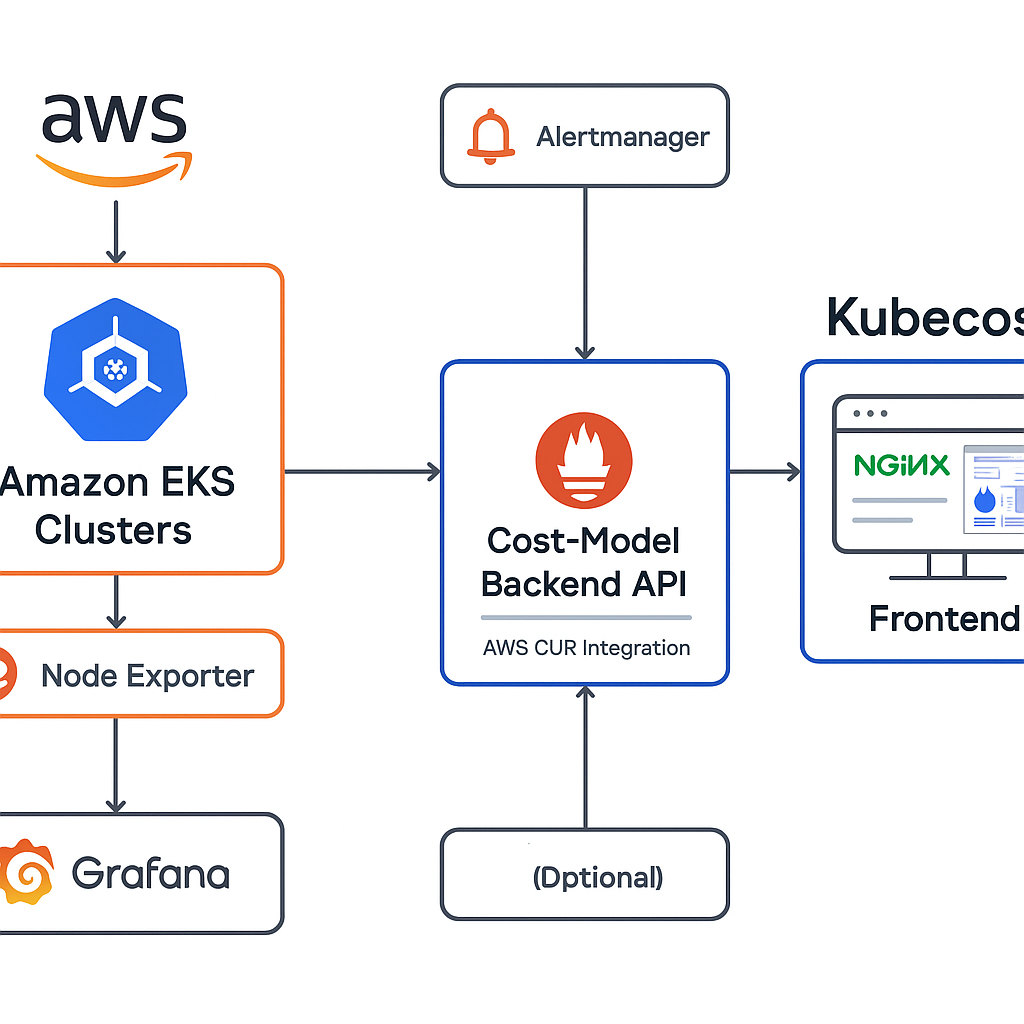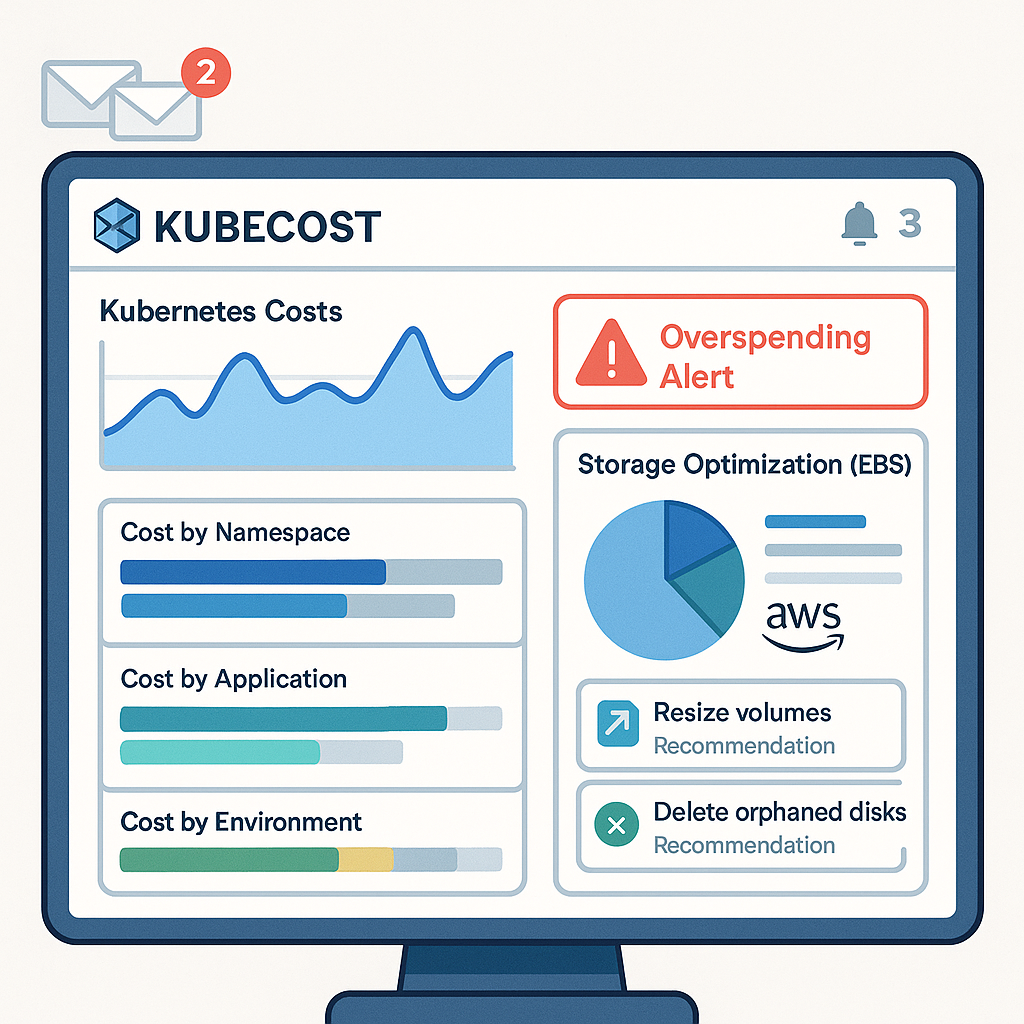Kubecost architecture essentials for scalable AWS cost management
Ever wondered why your AWS Kubernetes costs fluctuate unexpectedly each month? If you’re managing Kubernetes workloads on AWS, you know the challenge of maintaining visibility into exactly where your cloud dollars are going. Kubecost provides the transparency and control needed to optimize your Kubernetes spending without sacrificing performance.
What is Kubecost and why it matters for AWS users
Kubecost is a specialized cost monitoring and management solution designed specifically for Kubernetes environments, including Amazon EKS clusters. It provides granular visibility into cloud costs at the pod, namespace, and application levels - something AWS Cost Explorer alone cannot deliver for containerized workloads.
For AWS users, Kubecost bridges the critical gap between your infrastructure spending and the actual business services consuming those resources. This visibility is essential for accurate chargeback, optimization, and financial planning.
Kubecost architecture: How it works with AWS
Kubecost’s architecture consists of several key components that work together to deliver comprehensive cost monitoring:

Core components
- Frontend: An Nginx-based interface that handles requests and displays cost data in intuitive dashboards
- Cost-model: The backend API responsible for cost allocation calculations, which ingests AWS pricing data and metrics
- Prometheus: The mandatory time-series database that scrapes metrics from your cluster (including cAdvisor and node exporter data) and stores cost and health data
- Optional add-ons: Kube-state-metrics for Kubernetes API metrics, Node-exporter for cluster health monitoring, Alertmanager for custom alerts, and Grafana for enhanced visualization capabilities
AWS-specific integrations
Kubecost seamlessly integrates with your AWS environment through:
- EKS Add-on deployment: The simplest way to install Kubecost on Amazon EKS clusters
- AWS Cost and Usage Report (CUR): For accurate pricing data including Enterprise Discount Program (EDP), Reserved Instances, and Spot instance pricing
- Amazon Managed Service for Prometheus: Supports federated setups for monitoring multiple EKS clusters
As hykell experts note, this architecture allows Kubecost to combine data from AWS Cost Explorer with Kubernetes metrics, creating unified dashboards that provide complete cost visibility across your containerized environment.
Kubecost pricing models: Open source vs. Enterprise
Kubecost offers multiple deployment options to fit different organizational needs:
Open source (free)
The open-source version provides:
- Basic cost allocation by namespace and pod
- Limited data retention
- Core visualization features
- Fundamental resource monitoring capabilities
This option is ideal for smaller teams or organizations just beginning their Kubernetes cost management journey. Think of it as a stepping stone that delivers immediate value while you assess your more advanced needs.
Enterprise tier
For organizations with more complex requirements, the Enterprise tier includes:
- AWS CUR integration for precise billing reconciliation
- Federated ETL capabilities for multi-cluster environments
- Extended data retention
- Advanced reporting and analytics
- Multi-cloud support
- Durable storage for historical data
While exact pricing isn’t publicly listed and requires consultation, the Enterprise tier is designed for organizations with larger Kubernetes deployments that need more sophisticated cost management capabilities. The investment typically pays for itself through the cost optimizations it enables.
Automating cost control with Kubecost
One of Kubecost’s most powerful features is its automation capabilities for ongoing cost optimization:
Cost allocation and budgeting
Kubecost automatically tracks expenses by:
- Team or department
- Project or application
- Environment (dev, staging, production)
This granular allocation enables automated chargeback and showback reports that help teams understand their resource consumption patterns. For example, you might discover that your development environment is consuming 40% of your Kubernetes resources despite serving only internal testing needs.
Budget alerts and guardrails
Set up customizable threshold alerts that trigger when:
- Namespaces exceed predefined spending limits
- Specific workloads show unusual cost patterns
- Resource utilization falls outside optimal ranges
These alerts can be integrated with your existing notification systems through Alertmanager. Imagine receiving a Slack notification when your data processing pipeline suddenly consumes twice its normal resources—allowing you to investigate before the monthly bill arrives.
AWS service optimization
Kubecost provides specific insights for AWS services, including:
- EC2 instance right-sizing recommendations
- Identifying idle or underutilized resources
- Flagging unnecessary or orphaned resources
By combining these insights with Hykell’s automated cloud cost optimization, you can implement a comprehensive strategy for managing your AWS Kubernetes expenses.
Storage optimization strategies for AWS EBS with Kubecost
Storage often represents a significant portion of Kubernetes costs on AWS. Kubecost helps optimize these expenses through:
EBS volume analysis
Kubecost monitors your EBS usage patterns to recommend:
- Appropriate storage class selection (e.g., gp3 vs. gp2)
- Volume resizing for underutilized resources
- Identification of orphaned volumes that can be safely deleted
For instance, many organizations default to gp2 volumes when gp3 would provide better performance at a lower cost for their specific workloads.
IOPS and throughput optimization
Finding the right balance between performance and cost is critical for EBS optimization. Kubecost helps analyze your workload patterns to recommend the most cost-effective configurations without compromising application performance.
Consider a database workload that needs high IOPS during business hours but minimal performance overnight—Kubecost can help identify these patterns and suggest optimized configurations.
PersistentVolume management
For Kubernetes-specific storage, Kubecost provides insights into:
- PV utilization rates
- StorageClass cost comparisons
- PV reclamation opportunities
These insights help you avoid the common scenario of provisioning large volumes “just in case” and instead align your storage resources with actual needs.

Implementing Kubecost in your AWS environment
Getting started with Kubecost on AWS is straightforward:
- Deploy Kubecost: Install via the EKS add-on, Helm, or EKS Anywhere
- Configure AWS integration: Connect to AWS Cost Explorer and/or AWS CUR for enhanced pricing accuracy
- Set up cost allocation: Define labels and annotations for accurate cost attribution
- Establish baselines: Monitor costs for several weeks to understand normal patterns
- Implement automations: Configure alerts and reporting based on your organization’s needs
Conclusion: Maximizing your AWS investment with Kubecost
In today’s cloud-native landscape, understanding and controlling Kubernetes costs is essential for efficient operations. By implementing Kubecost for your AWS Kubernetes workloads, you gain the visibility and automation needed to optimize spending without sacrificing performance.
The right cost management strategy can reduce your AWS cloud costs by up to 40% through automated optimization. Hykell specializes in helping organizations implement these solutions, focusing specifically on AWS environments to maximize your cloud investment return.
Ready to gain control of your Kubernetes costs on AWS? Start by implementing Kubecost’s architecture and automation capabilities to transform your cloud financial management approach.
